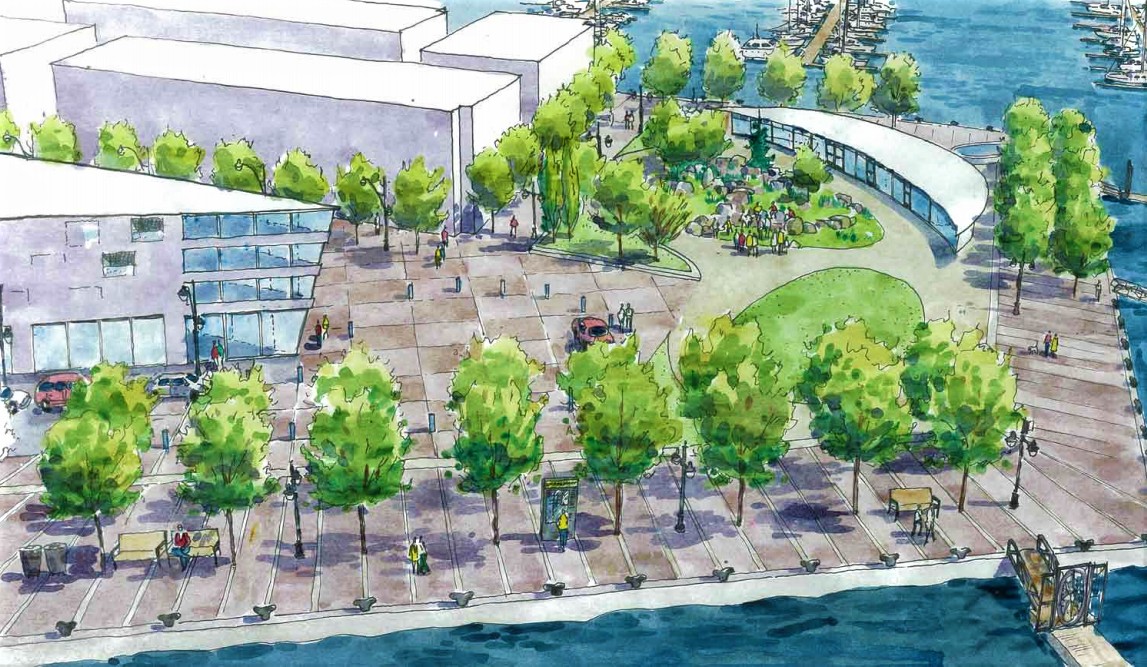
Could innovative financing plan fund Mississauga’s Port Credit Marina development?
For residents and visitors enjoying Port Credit’s waterfront trail, the marina at 1 Port Street East – with its dull roadside view of a fenced-off parking lot, dated office building and aging docking slips – would hardly inspire a double-take from passersby. But some Mississauga councillors and local advocates have their eyes fixed on it.
The marina site is one of three lakefront developments touted as vital projects for the city’s economic recovery. It’s also the furthest behind schedule. The City’s latest hopes to pay for the project were dashed in October, when its application to fund the $71.3-million marina was rejected by the Province under Ottawa’s Investing in Canada Infrastructure Plan. The project was one of the applications totalling nearly $1 billion in funding, sought in the fall of 2019 for transit, community and cultural development work in the city.
Revamping the marina, a central part of the Inspiration Port Credit Master Plan, will see the area’s transformation into a mixed-use waterfront destination act as a bridge between two major developments at Lakeview Village, to the east, and Port Credit West Village. While those developments will usher in thousands of housing units, the 1 Port Street East project is planned around the modernization of the marina to service larger vessels in its 18-foot minimum deep waters and the revitalization of the surrounding 3.4 acres of parkland.
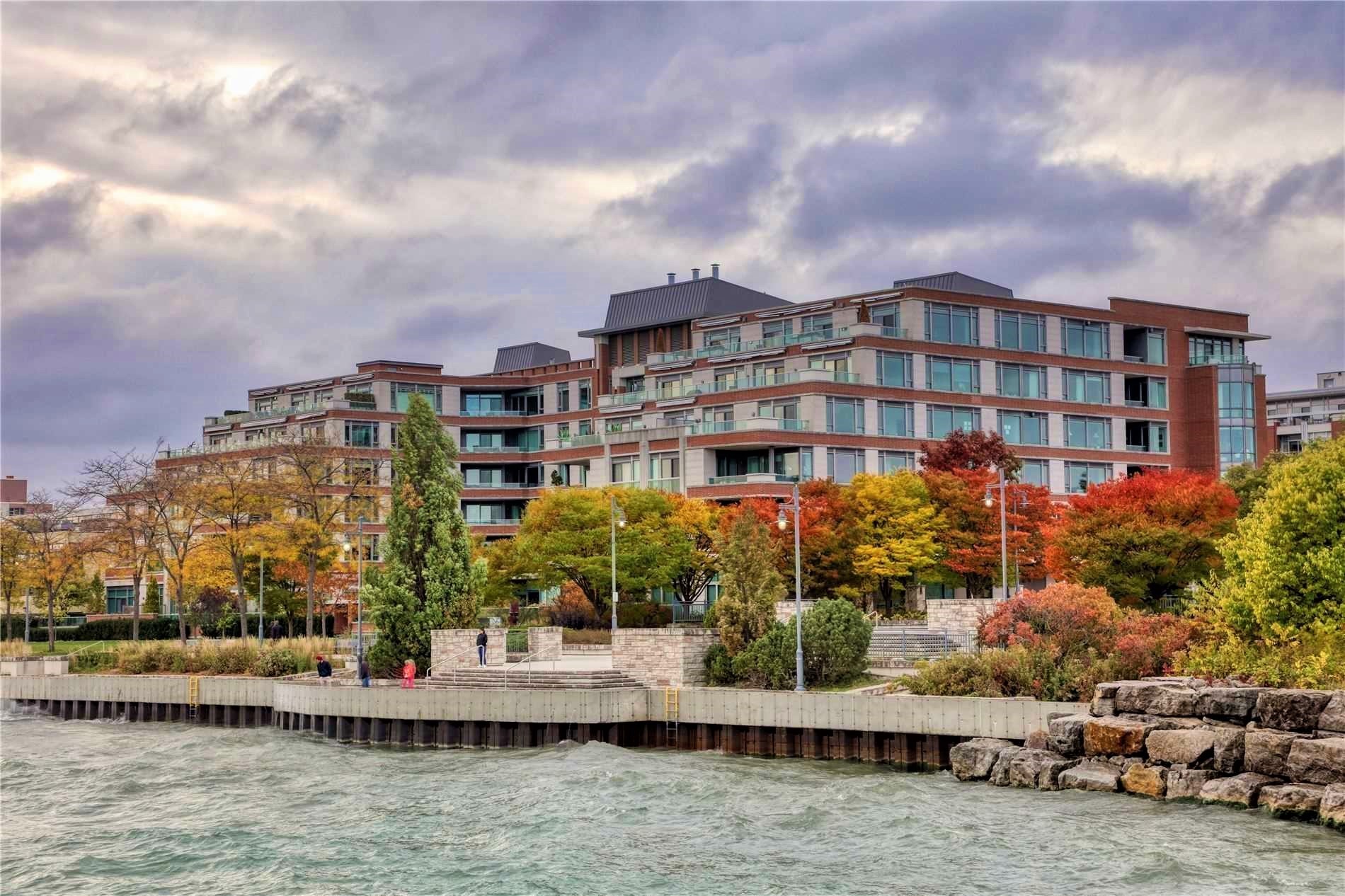
New developments to the east of the marina, illustrate the modern form along the waterfront that attracts more investors and residents.
A master plan for the site was approved in 2016, after much debate on the project’s potential to bring in tourism revenue for the city and pushback from Councillors Pat Saito and Carolyn Parrish, who characterized it as a low priority development with a ballooning cost. According to a January 2016 staff report, the capital investment cost forecast by consultants at the time was between $20 million and $50 million. Now, the estimated cost is up to $71.3 million.
According to a 2016 report by Touristics, the marina consultants hired by Mississauga, “A private developer building and operating the marina would be faced with higher financing costs than the City,” citing the higher insurance cost, property taxes, property rent and cost of leasing space during the winter. “Without another revenue source to off-set the debt service, we do not believe that any of the marina alternative concepts included in this analysis would be attractive to a private developer [or] operator,” it states.
Mary Simpson, president of the Town of Port Credit Association, told The Pointer earlier this month that private funding has not been explored in earnest, but with the latest infrastructure grant rejection, developer subsidies such as a Tax Increment Financing (TIF) scheme have been floated for consideration.
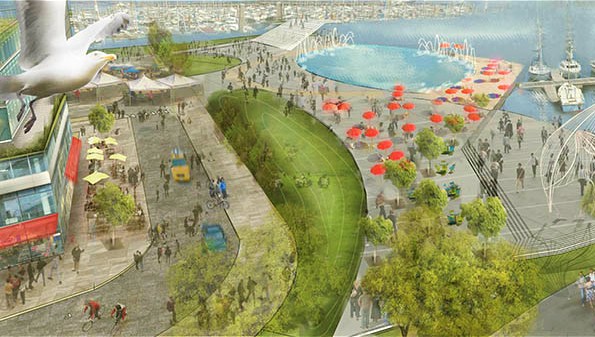

The Inspiration Port Credit plan includes green spaces, cultural amenities and commercial features.
TIFs are not widely used in Canadian municipalities, said Murtaza Haider, a data science and real estate management professor at Ryerson University. He is also the co-author of a 2016 paper through the University of Toronto’s Institute on Municipal Finance and Governance, which explores whether TIFs can support transportation infrastructure investments in Canada.
Haider, who lives near Port Credit, said the developments in the area will boost property value by creating “more vibrancy, more interesting retail… It will start to resemble the Oakville downtown, rather than something that one would expect in the south western part of the City of Toronto or southeastern part of Mississauga.”
A TIF would freeze property tax revenue, excluding the rate of inflation, at the valuation level prior to development, for a determined time. The property tax difference, or increment, above that fixed level over the years, not including the rate of inflation, would then be used to pay off the development. The development would raise the formerly depressed values of the land and buildings in the area, eventually increasing property tax revenues from the area for the City. That boost in funds would then be used to pay off the borrowing cost.
In his paper, Haider notes three items contribute to the success of a TIF to meet revenue targets: mixed-land use, not initiating it during a recession and smaller TIFs. According to his analysis, multi-billion-dollar transit projects, spread across several designated TIF zones, would not be successful.
“There are lots of uncertainties. This COVID-19 [pandemic] alone would have sank any TIF,” he said. “That's why some very large, long-term projects based on TIF, it’s a big risk… There's a merit in doing small TIFs.”
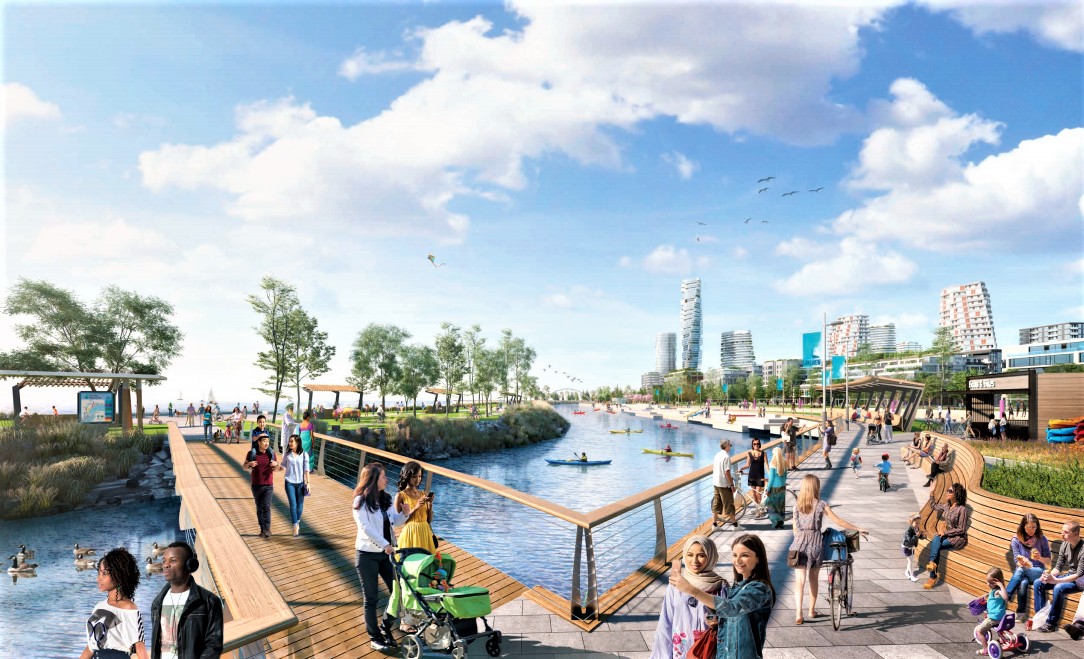
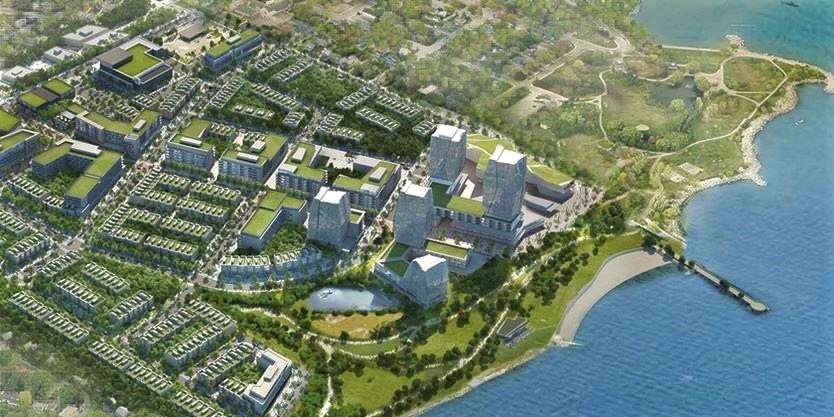
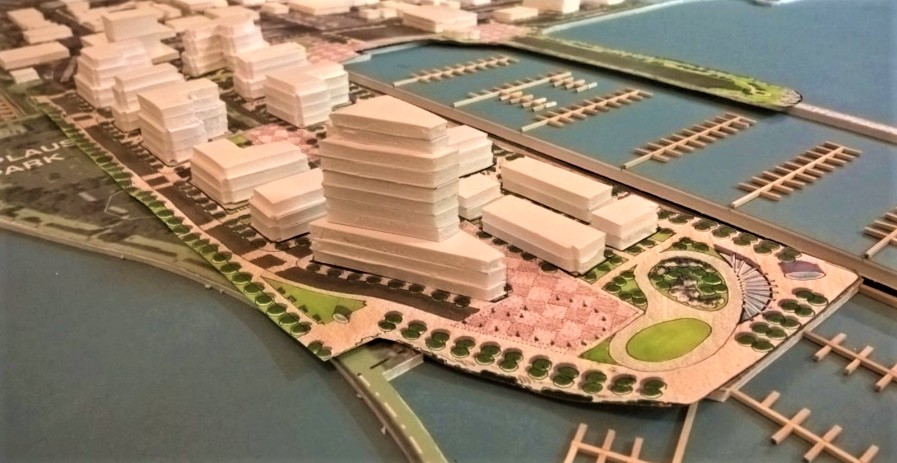
The Port Credit Marina plan, bottom, will act as a bridge along Mississauga's Lake Ontario waterfront between Lakeview Village, top, and Brightwater, middle (also called Port Credit West Village).
Chicago has used TIFs more than 173 times since 1984, Haider’s paper notes, and as of 2014, the City estimated TIFs had generated $7 billion in revenue – every dollar invested in a TIF attracts six dollars through private sector investment, it found. Calgary also has a comparable scheme through its Community Revitalization Levy, from which the City has seen positive returns.
Analyzing the feasibility of a TIF would come down to a request from council to the City’s planning staff to seek proposals from consultants on what this scheme could look like, and whether it is worth pursuing.
Mayor Bonnie Crombie said the marina is a “vital” part of Port Credit. In an October press conference, she said the only way for the City to move forward with a plan to reshape the marina and surrounding area is to seek funding from higher levels of government due to budget constraints.
So far, that hasn’t worked.
Email: [email protected]
Twitter: @LaVjosa
COVID-19 is impacting all Canadians. At a time when vital public information is needed by everyone, The Pointer has taken down our paywall on all stories relating to the pandemic and those of public interest to ensure every resident of Brampton and Mississauga has access to the facts. For those who are able, we encourage you to consider a subscription. This will help us report on important public interest issues the community needs to know about now more than ever. You can register for a 30-day free trial HERE. Thereafter, The Pointer will charge $10 a month and you can cancel any time right on the website. Thank you.
Submit a correction about this story


